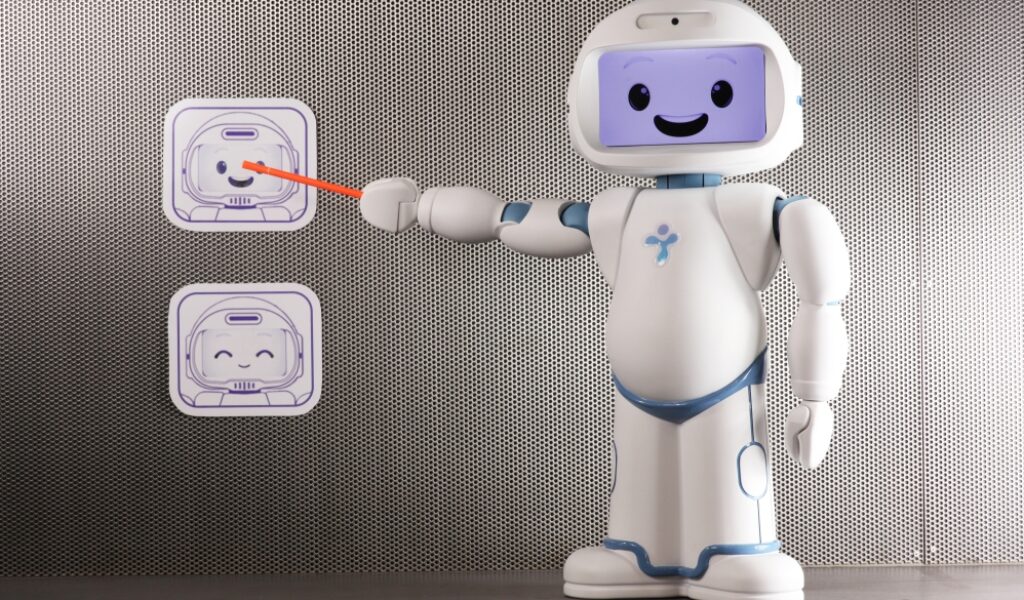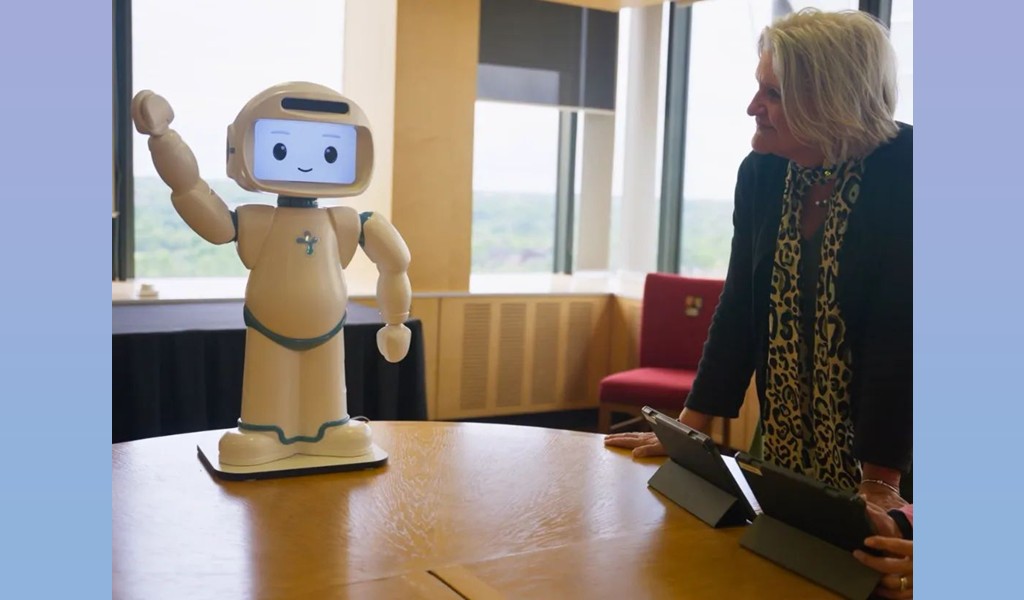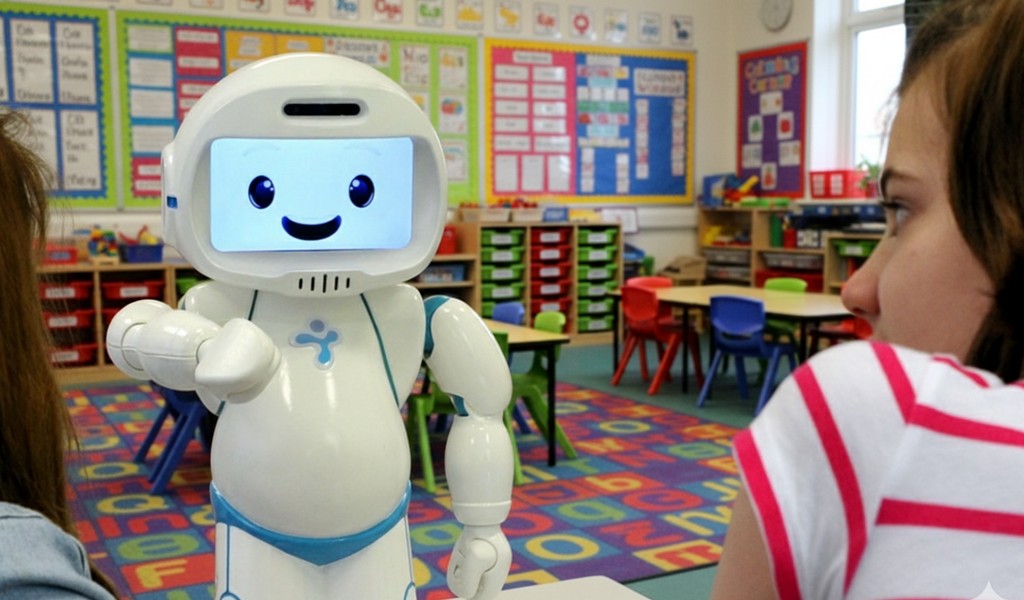A robot to teach social interaction to children with autism?! At the first look, this idea seems counter-intuitive. however, using robots for social skills training in learners with ASD has been very promising so far. There are many years of research showing that children with autism are more comfortable interacting with robots comparing to human fellows. For example, one scientific study with QTrobot, an expressive robot for autism, shows that children have higher attention and less stereotypical behaviours while working with the robot, compared to the time they are doing the same activities with a human caregiver. Researchers believe it is because robots look like humans, but they are way simpler!
Challenges In Providing Effective Special Need Education:
Autism spectrum disorder (ASD) is a rapidly growing condition that is becoming one of the most concerning topics in pediatric healthcare and special need education. Challenges in social interaction and communication often cause long-term consequences including learning deficits and inability to create and sustain relationships, and sometimes lack of autonomy in daily life activities. Even though early intensive interventions have proven to be valuable, it does not mean that they are widely implemented for children with special needs and autism. There are a variety of barriers that in fact prevent children from receiving the required specialized sessions.
1. Shortage of specialized educators and therapists:
One of the main known barriers in proving effective special education for children is the shortage of specialized human resources. For example, in the US the number of special education teachers has dropped by more than 17 % over the past decade. Therefore, all in all, there is always an unbalanced ratio between the number of children who need special education and the number of people who can provide such training.
2. Difficulty to engage and maintain children’s attention:
Not necessarily all the sessions delivered by a professional educator or therapist can make a big difference in the outcome of the children with ASD. Children with autism can struggle to stay engaged for a long day at school, especially when not every lesson will be to their personal interest. Due to autism characteristics and children’s difficulties to engage with other humans, many children do not benefit a lot from the sessions and would require longer-term training to show a significant sign of progress.
With all the rapid incidence growth and barriers in the availability and efficiency of special need education, it is safe to say that autism is becoming a big challenge facing the future of healthcare and education system and requires urgent intervention in order to improve the quality of life children and their families.
Using Technology In Autism Care And Special Need Education:
The initial idea of using technology was inspired by the autism characteristics. Children with autism are known to have a very high interest in technology and computer systems, mainly because technology is predictable and rule base. Children with autism have the tendency to feel more comfortable while working with technology since it can offer frequent repetition, simplicity, exaggeration and multi-sensory stimulation.
Research of the US national professional developmental centre on autism spectrum disorder in the area of assistive technology had very progressive and promising results in recent years. Now technology-assisted instruction and intervention is recognized as an evidence-based practice, which has a wide variety of practical use-cases.
Also, technology has the ability to overcome the challenge of human resource shortage and make special need education widely accessible and affordable. By using technology specialized training can be replicated and can be accessible even of families living in remote areas.
Robot-Assisted Intervention For Autism and special need Education:
At the first sight, using robots for teaching social skills, communication and emotions seem to contradict the aim of improving the social and communication skills in individuals on the autism spectrum, since children with autism have already limited ability to interact. Many are concerned that the robot isolates children even more and make them even more uncomfortable with other humans.
However, in practice, it is not what happens. By being the centre of joint attention between the child and the educator or parent, a robot can facilitate and mediate the communication between them and create a triangular interaction. Scientists suggested that a robot can be a complementary assistive technology to elicit positive behaviours and promote learning in children with ASD.

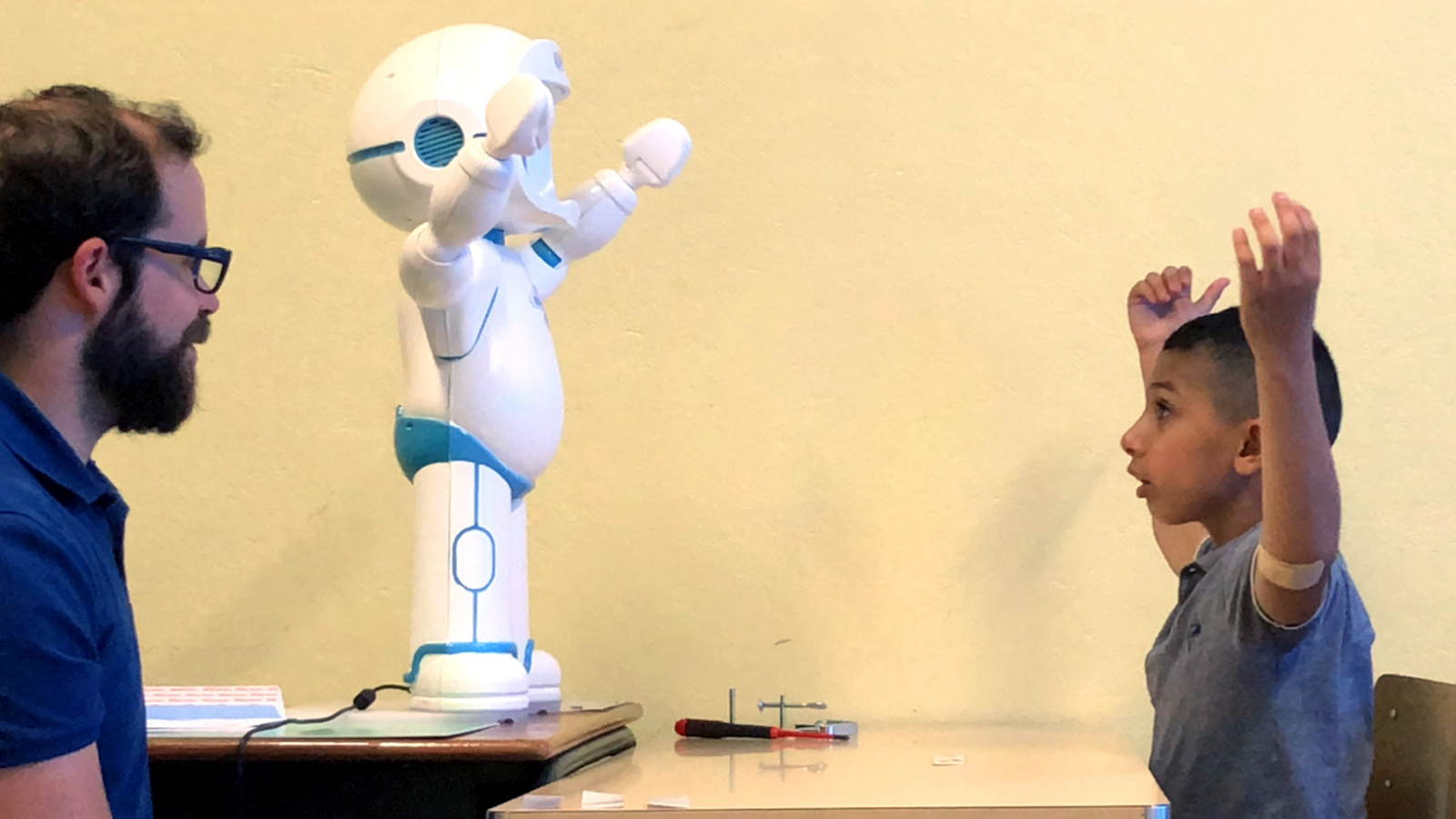
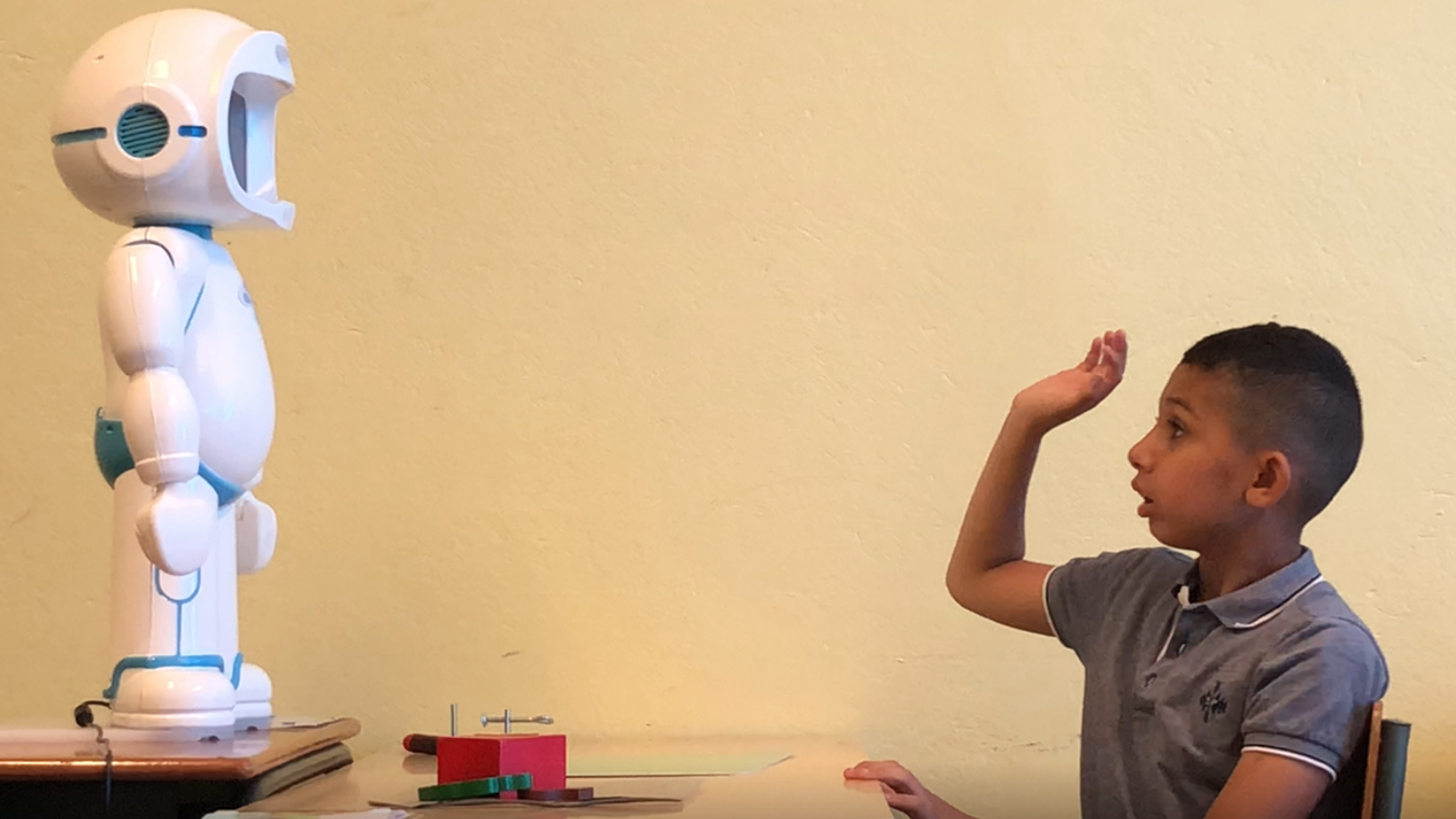
What Is The Role Of The Robot In Autism Education?
Initially, you may think that using a robot equals replacing the therapists and teachers. However, the robot is a tool to enhance engagement, facilitate interaction and improve learning opportunity for students with autism. The various roles of the robot can be broken down into:
Mediator of joint attention:
The most important role of a robot is to create a link between the child and the human partner and to facilitate their interaction, primarily by being a centre of shared attention. In this way, using the robot can improve the opportunity for a human caregiver to engage with a child and teach a new skill.
A tool to enhance engagement:
Engagement is one of the key factors required for learning. The robot can improve the attention and engagement of students and enhance their ability to sustain the attention to the educational content. By enhancing the engagement and increasing the attention time, the robot can create a valuable window toward teaching new skills to learners with autism.
Reinforcer for appropriate or desired behaviours:
The robot can also work as a strong reinforce. For example, therapists have reported that even by informing kids that they can play a game with QTrobot, if they finish their tasks, children are more prone to be focused and cooperative.
A tool to increase access to special needs education:
One of the main concerns of parents with a child with special need education is how and with what cost to have access to specialized interventions for their child. Large scale studies recommend that having close to full-time training for children with autism, particularly in the early years, can have a tremendous impact on the autonomy of the children, their mental health and their future quality of life. But having enough educational sessions per week to fulfil the training needs of a child with autism is not an easy task, even if a family is financially able to afford the therapy costs. A robot, through replicating standard educational lessons, can provide the possibility to practice a variety of skills, such as language development and communication at-home and by parents.
QTrobot For Children With Autism And Special Need Education:
QTrobot is an expressive and engaging robot developed for children with autism and special need education. By having a monitor as its face, QTrobot can present a variety of simplified and exaggerated emotions as well as faces designed to teach autonomy skills and speech therapy. QT’s upper body movements allow the robot to present body language of emotions and teach social skills such as imitation and joint attention.
Meet QTrobot, Robot For Children With Autism And Special Need Education
QTrobot is scientifically validated to improve the learning opportunity of children with autism through improving their engagement and the attention time. Also, children with autism have shown improvement in their emotional appropriateness and reduction in their emotion-related autism symptomatology after a 7 session intervention focused on emotional ability.
QTrobot comes with educational curricula designed to support the development of social, emotional and cognitive skills in students with autism, as well as sessions for teaching receptive and expressive language. The educational lessons are designed to engage the learner in educational games using a variety of evidence-based practices including social skills training, modelling, prompting and reinforcement allowing the students to learn while enjoying the interaction with the robot.
In QTrobot educational curricula, there is an emphasis on the involvement of teachers and parents. QTrobot proactively diverts the attention of learners to the human interaction partner and motivates the child to practice the skills with their human caregiver. In this way, QTrobot facilitates the generalization of the skills to the daily life of children and aims to support the usage of the learnt skills in the child’s natural environment.
